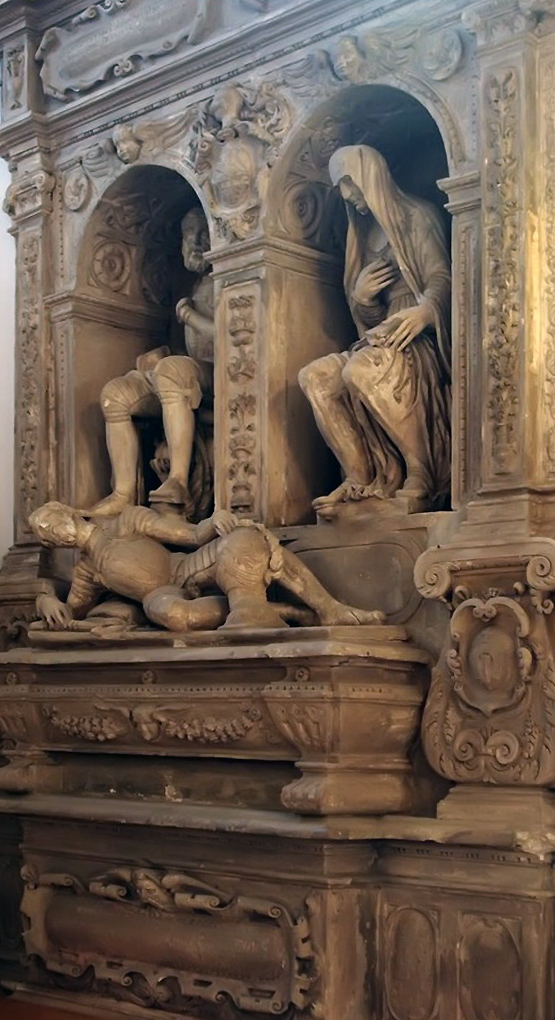Feliks Kryski on:
[Wikipedia]
[Google]
[Amazon]

 Feliks Szczęsny Kryski (1562 – 10 February 1618) was a Polish nobleman, politician, writer, and orator.Lechosław Herz (2006). Puszcza Kampinoska: przewodnik. Oficyna Wydawnicza "Rewasz". pp. 321–. . He was Grand Chancellor of Poland from 1613 until his death.
Feliks Szczęsny Kryski (1562 – 10 February 1618) was a Polish nobleman, politician, writer, and orator.Lechosław Herz (2006). Puszcza Kampinoska: przewodnik. Oficyna Wydawnicza "Rewasz". pp. 321–. . He was Grand Chancellor of Poland from 1613 until his death.

 Feliks Szczęsny Kryski (1562 – 10 February 1618) was a Polish nobleman, politician, writer, and orator.Lechosław Herz (2006). Puszcza Kampinoska: przewodnik. Oficyna Wydawnicza "Rewasz". pp. 321–. . He was Grand Chancellor of Poland from 1613 until his death.
Feliks Szczęsny Kryski (1562 – 10 February 1618) was a Polish nobleman, politician, writer, and orator.Lechosław Herz (2006). Puszcza Kampinoska: przewodnik. Oficyna Wydawnicza "Rewasz". pp. 321–. . He was Grand Chancellor of Poland from 1613 until his death.
Biography
Kryski was a Polish nobleman of the line of Mazovian dukes that first came to power in 1429. He was born in 1562 inDrobin
Drobin is a town in Płock County, Masovian Voivodeship, Poland, with 2,778 inhabitants as of December 2021.
History
The settlement was first mentioned in the 12th century, when it was part of Piast-ruled Poland. It was granted town rights in ...
, the son of Stanislav Kryski and Margaret Uchanska and brother to Wojciech Kryski.
Kryski was speaker in the sejm
The Sejm (English: , Polish: ), officially known as the Sejm of the Republic of Poland ( Polish: ''Sejm Rzeczypospolitej Polskiej''), is the lower house of the bicameral parliament of Poland.
The Sejm has been the highest governing body of ...
s of 1603 and 1607. He was an ardent supporter of king Sigismund III, supporting him in his clashes with Jan Zamoyski
Jan Sariusz Zamoyski ( la, Ioannes Zamoyski de Zamoscie; 19 March 1542 – 3 June 1605) was a Polish nobleman, magnate, and the 1st '' ordynat'' of Zamość. He served as the Royal Secretary from 1565, Deputy Chancellor from 1576, Grand Cha ...
's party. Kryski was a close associate of Grand Marshal of the Crown, Zygmunt Myszkowski and through these connections he became one of the closest advisers of Sigismund III. He held the title of Wojski
A ''wojski'' (Medieval Latin: ''tribunus'', hence sometimes rendered into English as tribune) was an officer in medieval Poland, responsible for the security of voivodeships or districts at times when voivods and castellans had accompanied the '' ...
of Zakroczym
Zakroczym (; yi, זאקראטשין ''Zakrotshin'') is a small town in the Masovian Voivodeship, Poland. It is located at around . The Vistula River flows through the town. Zakroczym has a long and rich history: in the Kingdom of Poland and the ...
.
During the Zebrzydowski Rebellion he stood faithfully by the monarch. His polemical writing ''Deklaracja pana wojewody krakowskiego'' refuted allegations by rebels. In 1609 he became the Deputy Chancellor of the Crown. He prepared an expedition to Russia, organizing pro-war propaganda. He has published several letters including the ''Diskurs słusznej wojny z Moskwą, rationes pro et contra''. He accompanied the king in the expedition to Moscow in 1610. On the Russian border he made a speech in which he congratulated the Polish kings successful entry to Russia.
He was an uncompromising advocate of the annexation of Russia. In 1611 he organized a solemn homage to Sigismund III captured the tsar Vasily Shuiski and his family. In 1612 he accompanied the king in his siege of Moscow. In 1613 he became the Grand Chancellor of the Crown
Chancellor of Poland ( pl, Kanclerz - , from la, cancellarius) was one of the highest officials in the historic Poland. This office functioned from the early Polish kingdom of the 12th century until the end of the Polish–Lithuanian Commonwea ...
. His predecessor was Jan Zbigniew Ossoliński and upon Kryski's death his successor was Stanisław Białłozor.
Kryski died in the year 1618 and was buried in the Kryskis' Chapel, Church of St. Anne in Warsaw
Warsaw ( pl, Warszawa, ), officially the Capital City of Warsaw,, abbreviation: ''m.st. Warszawa'' is the capital and largest city of Poland. The metropolis stands on the River Vistula in east-central Poland, and its population is officia ...
, Poland
Poland, officially the Republic of Poland, is a country in Central Europe. It is divided into 16 administrative provinces called voivodeships, covering an area of . Poland has a population of over 38 million and is the fifth-most populou ...
by his widow Sophia Łubienska. To commemorate the deceased, his widow founded a separate chapel, around the year 1620, on the northern facade of the church, a rectangular plan made of brick, plastered and covered with a dome, as if embedded in a four-sided roof with a lantern, topped with a cross. Its walls were decorated with intersecting pairs of Tuscan pilasters on high pedestals. Felix's son Paul Kryski, standard-bearer of King Sigismund III, Kowelski governor, and several years later – Łubienski Kryska Zofia was buried in the basement of the chapel when he died in 1650. (zmarl.1624 ) Everybody buried in the chapel is commemorated with an epitaph, embedded into the wall.
References
{{DEFAULTSORT:Kryski, Feliks Chancellors of Poland 1618 deaths 15th-century births